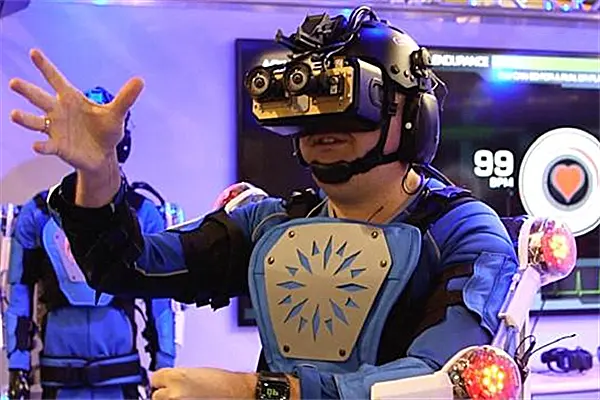(THE WALL STREET JOURNAL) Can technology teach you what it feels like to be old?
Amid the hype about virtual reality and robotics at CES 2016, I strapped on a headset and exoskeleton designed to make you feel 40 years older. That’s right, older. The R70i Age Suit, made by a tech firm, Applied Minds LLC forGenworthFinancial, an insurance company, simulates vision and hearing loss, as well as reduced mobility from muscle deterioration and arthritis.
Many of the same technologies could be used in exoskeletons that give us superhuman capabilities, but think of this one as a reverse Iron Man.
The unforgettable, and at times distressing, experience shed light not just on aging, but also how virtual reality equipment can teach empathy and shape our perceptions of the world around us. The suit made me feel like I was nearly 80 years old.
“I would like a new dialogue on aging,” saidBran Ferren, a former Disney Imagineer and president of R&D who co-founded Applied Minds. “You can intellectualize these things all day long, but when it becomes an emotional first-person experience, it is very different.”
Once I suited up in the 40-pound kit—a three-person job—Mr. Ferren guided me through the tech he’d developed to impair my senses and strength. As is often the case, my vision went first.
An Oculus virtual-reality visor was fitted with cameras so you can see what’s ahead through a screen. But then, the Age Suit’s augmented-reality software distorts that view, to simulate the effects of vision problems: cataracts, macular degeneration, floaters and more. The glaucoma simulation made my peripheral vision gradually decrease until I was left with tunnel vision of just what’s in front of me.
For hearing, the headphones in the Age Suit added the ringing of tinnitus and raised background noise, making regular conversation far more challenging.
The most shocking part of the experience came from the exoskeleton, which uses sensors to monitor eight joints in my arms, legs and hips, and then apply mechanical resistance to slow me down. The suit doesn’t move your muscles with you—it puts on the brakes.
Ordinary tasks like walking around and lifting my arms became extremely difficult. My heart rate rose, and I was sweating enough that my Age Suit needed a good wash after I was done with it. Mr. Ferren reminded me that I still didn’t have it as bad as someone who really suffers from arthritis: The Age Suit didn’t actually add pain to my joints.
Genworth, which sells long-term-care insurance, plans to tour the U.S. with the suit as part of its “Aging Experience,” which also includes displays that let onlookers glimpse the experience of the person wearing it. The company says it hopes to help caregivers gain a better understanding of their patients—and perhaps get the rest of us to better appreciate our own aging.
“It gives you the ability to look after your future,” says Mr. Ferren.
 简体中文
简体中文





